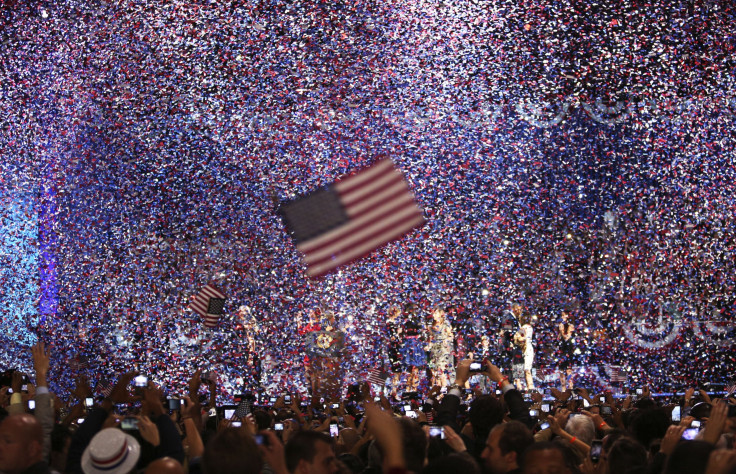US Election Facts And Statistics: 14 Things To Know About Votes Throughout History

The United States presidential election is set to take place Tuesday, marking the end of historic campaigns run by the Democrats and the Republicans this cycle. The election will decide who among the two major party candidates — former Secretary of State Hillary Clinton and real estate mogul Donald Trump — will emerge victorious and get the chance to lead the country.
Both campaigns have been marred by accusations hurled at each side from the other. While the Trump-Mike Pence team had to deal with the GOP nominee’s controversial tax returns and derogatory comments about women, Clinton and running mate Tim Kaine faced backlash over the former first lady's use of a private email account during her time in the Obama administration.
Remember, however, that the U.S. has a long history of democracy. As Election Day 2016 approaches, brush up on these facts and figures about past elections:
1. Derived from French and ultimately Latin, the word "election" comes from “eligere,” which means “to pick out,” according to Dictionary.com.
2. In order to be elected president, the candidate must fulfill three basic criteria — be at least 35 years of age, be a permanent U.S. resident for at least 14 years and be considered a natural U.S.-born citizen.
3. The final election is decided by the Electoral College, or a group of 538 electors. For a candidate to be declared president, he or she must have at least 270 of these votes under his or her belt.
4. The oldest U.S. president to be elected was Ronald Reagan, who was 69 at the time, according to the Robinson Library. Clinton turned 69 on Oct. 26, while Trump is 70 years old.
5. To date, 17 U.S. presidents have been elected for at least two terms. This includes current President Barack Obama. While 13 of them served a full two terms, three were re-elected but could not complete the second half of their presidencies: Abraham Lincoln, William McKinley and Richard Nixon. The 22nd Amendment set term limits for each sitting president after Franklin D. Roosevelt was elected for four terms.
6. There have been 18 Republican presidents and 15 Democratic presidents so far. Four presidents identified as Democratic-Republicans, four as Whigs, one as a Federalist and one with no party affiliation — George Washington.
7. The requirement to own property to vote was removed by the final state, North Carolina, in 1856, according to the American Civil Liberties Union.
8. Congress passed the 15th Amendment in 1870 to give suffrage to African-Americans and other nonwhite men, according to the History Channel. Despite this, the South and parts of the North did not allow African-Americans to vote until the 1960s.
9. Victoria Woodhull became the first woman to run for U.S. presidency in 1872, according to Politico. This was almost 50 years before the 19th Amendment was passed, allowing women to vote in presidential elections in 1920.
10. There have been over 200 women who have run for the position of president, according to PBS. These are mostly nominees of minor parties and candidates who ran for president before women achieved suffrage.
11. Clinton formally became the first woman to receive a major party nomination after the Democrats named her this summer as their candidate for the 2016 election.
12. Since the 1980s, women have been more likely to go out and vote than men, according to FactRetriever. While men have moved toward the more conservative Republican party since the 1960s, women tend to align themselves with the Democrats.
13. NASA astronauts aboard the International Space Station can vote in elections from orbit with the help of secure email, according to Space.com. This was the result of a 1997 Texas bill.
14. TargetSmart counted about 200 million voters registered for the upcoming general election.
© Copyright IBTimes 2024. All rights reserved.






















